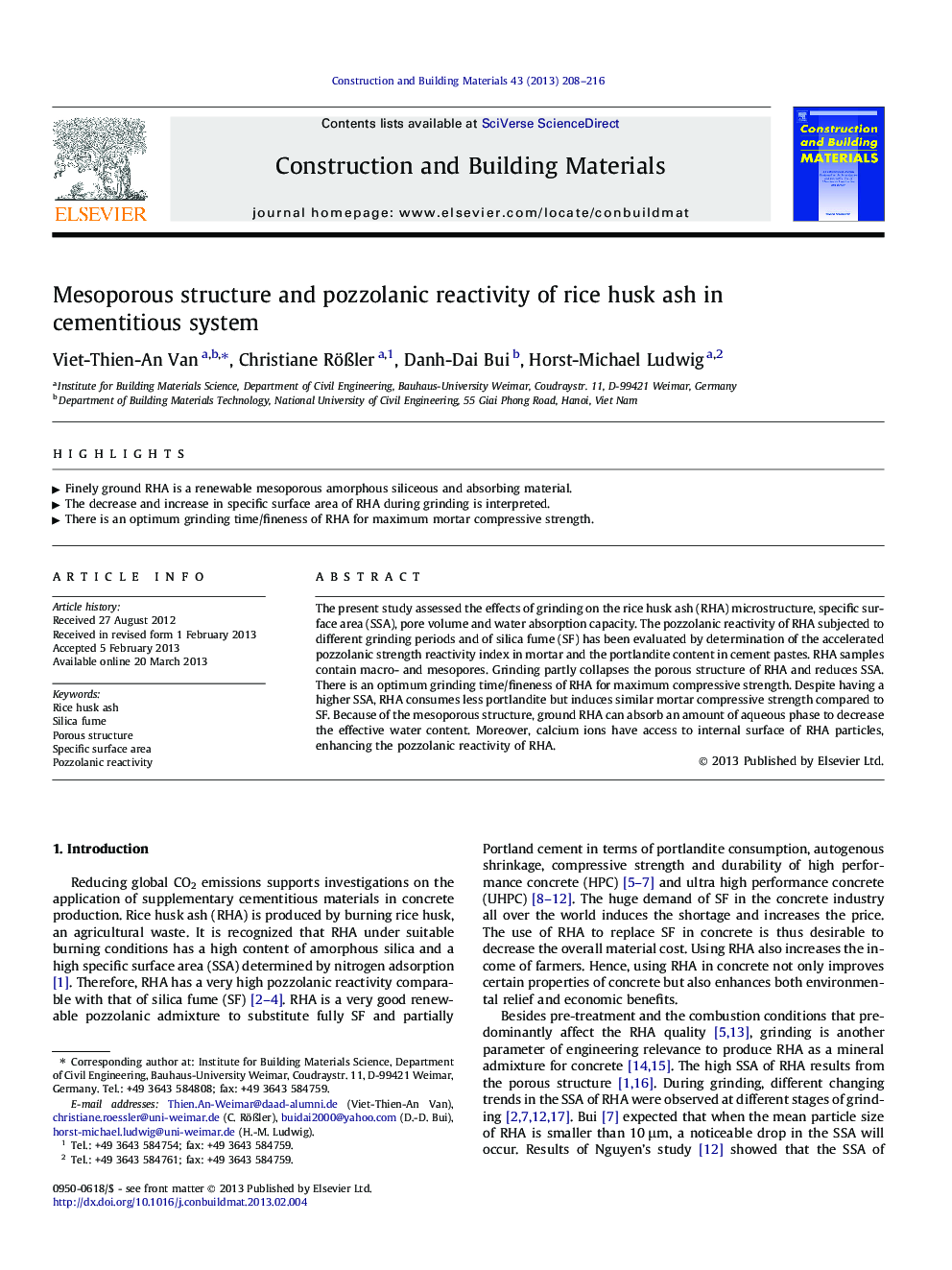| Article ID | Journal | Published Year | Pages | File Type |
|---|---|---|---|---|
| 258152 | Construction and Building Materials | 2013 | 9 Pages |
The present study assessed the effects of grinding on the rice husk ash (RHA) microstructure, specific surface area (SSA), pore volume and water absorption capacity. The pozzolanic reactivity of RHA subjected to different grinding periods and of silica fume (SF) has been evaluated by determination of the accelerated pozzolanic strength reactivity index in mortar and the portlandite content in cement pastes. RHA samples contain macro- and mesopores. Grinding partly collapses the porous structure of RHA and reduces SSA. There is an optimum grinding time/fineness of RHA for maximum compressive strength. Despite having a higher SSA, RHA consumes less portlandite but induces similar mortar compressive strength compared to SF. Because of the mesoporous structure, ground RHA can absorb an amount of aqueous phase to decrease the effective water content. Moreover, calcium ions have access to internal surface of RHA particles, enhancing the pozzolanic reactivity of RHA.
► Finely ground RHA is a renewable mesoporous amorphous siliceous and absorbing material. ► The decrease and increase in specific surface area of RHA during grinding is interpreted. ► There is an optimum grinding time/fineness of RHA for maximum mortar compressive strength.
